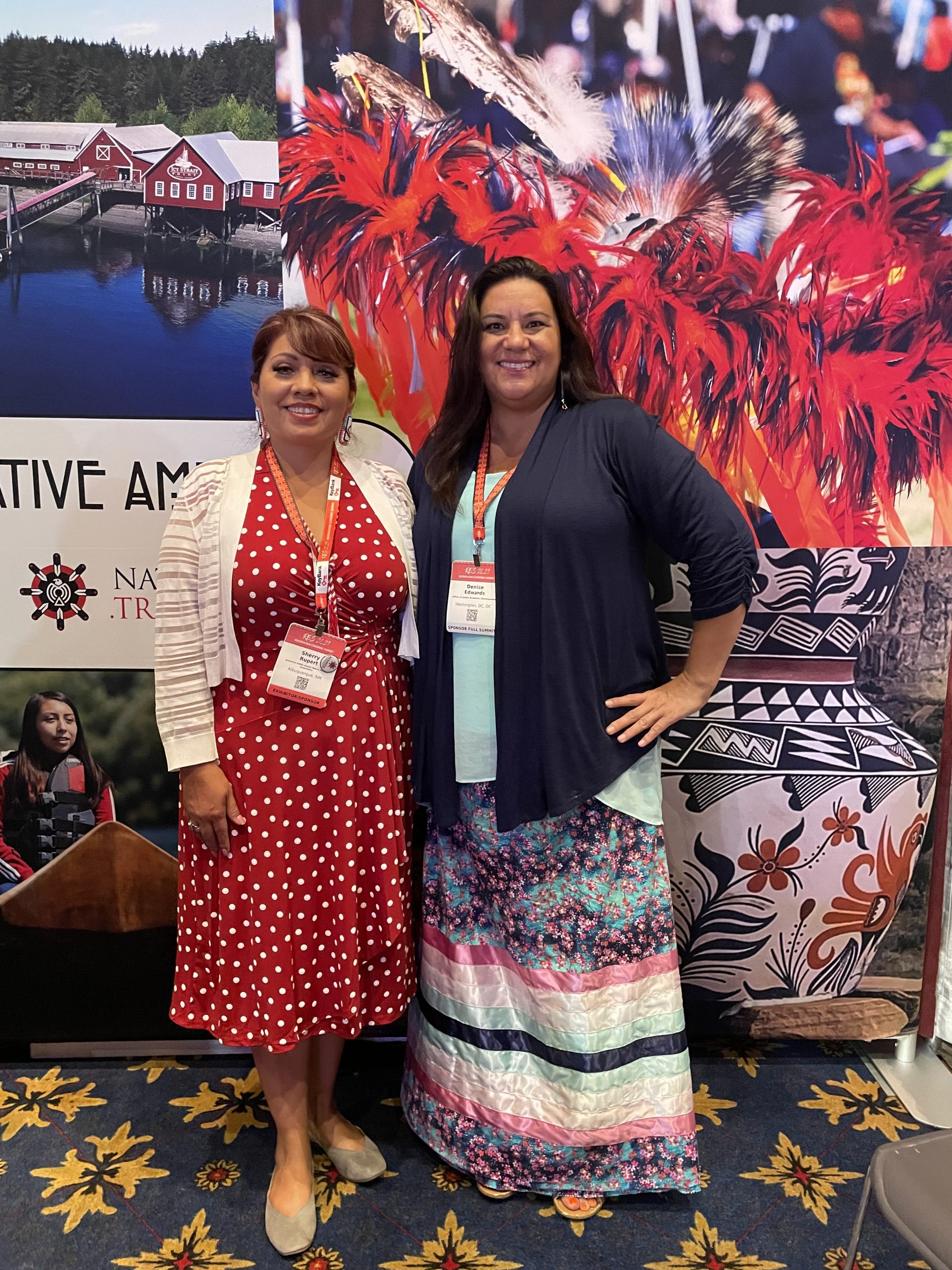O me’a”kwa: Final Days of Summer
(I’m going to travel over there, Northern Paiute)

Ha muh (How are you?)
Dear Members, Partners and Friends,
I hope this newsletter finds you healthy, happy and enjoying the final days of summer.
If you haven’t been paying attention, 2021 is turning out to be a pretty good year for Indian Country tourism. We’ve welcomed several amazing new cultural experiences this summer and there are so many more that are still yet to come.
The summer kicked off with the opening of the new MHA Interpretive Center in May followed by the opening of the new Choctaw Cultural Center in July. In addition to the center, Choctaw Nation also cut the ribbon on the Sky Tower expansion of its Choctaw Casino & Resort. This new luxury tower is a veritable tribute to Choctaw art as it features 58 pieces of public art exclusively commissioned for the new project, all created by Choctaw tribal citizens.
The summer also saw the launch of Akwesasne’s new travel website and cultural tour programs—which are being offered virtually and in person. Whether you’d like to learn how to make “Cornbread from a Mohawk Perspective” or explore Mohawk basketry, Akwesasne’s programs were developed with a dual purpose—not only to entice visitors, but also to teach St. Regis Mohawk tribal members about entrepreneurship and how to tell their stories to the public.
We also saw the launch of the much-anticipated Redwood Yurok Canoe Tours in Northern California, despite weather and climate challenges. These canoes are being called the “rarest vessels in the world,” as there are only ten in the world, with just two of them open to the public.
The summer also saw the opening of James Beard Award-winning Sioux Chef Sean Sherman’s Owamni Restaurant in Minneapolis. The restaurant features a menu absent of any colonial ingredients, but equally exciting, it may be the only establishment in the world to have a website fully translated into the Dakota language.
In September, the much anticipated First Americans Museum in Oklahoma City will open its doors to the public during a weekend-long celebration of blue-ribbon events that include remarks by U.S. Poet Laureate Joy Harjo (Muscogee).
These major headline-inspiring events are bringing new awareness to the creativity, the diversity and the uniqueness of Native American tourism experiences. Beyond the headlines, there are so many regional and community projects that are cause for celebration.
There’s the new Wind River Reservation Mobile Tour, which was developed in partnership with the students of Fort Washakie High School; a new public fish market for the Red Cliff Band of Lake Superior Chippewa, which for the first time allows tribal citizens to buy fish directly from tribal fishers; a re-opening and re-branding of the Three Chiefs Culture Center after a devastating arson fire last year, and so many more projects to look forward to.
I feel such a sense of energy and excitement from Indian Country as we celebrate the opening of all these experiences. We all understand how profoundly important they are, not only in creating new jobs, but in the perpetuation of our heritage.
I think James Lazore, Director of Economic Development for the Saint Regis Mohawk Tribe so beautifully highlighted what we are all trying to accomplish when he called the Akewsasne.travel program a “meaningful and targeted approach to cultural tourism that keeps and maintains control of our rich cultural narrative for our guests.”
This is exactly the approach we advocate for at AIANTA and the launch of Akwesane.travel is especially significant as we’ve been able to watch the vision unfold through the years at our annual American Indian Tourism Conference (AITC).
While the keynote speakers at AITC are always inspiring and I always learn so much from the breakout sessions, it is the off-program idea sharing that I find most powerful. There is something so fulfilling about facilitating a connection between two strangers and watching it turn into a lifelong bond over common goals and aspirations.
To hear from the Three Chiefs Culture Center, formerly known as Squelixw-Aqlsmaknik (The People’s Center), that the very idea of their rebranding was inspired by their attendance at an AITC conference, is a powerful testament to what can happen at AITC.
LeAnn Littlewolf of the American Indian Community Housing Organization once called AITC the “best economic development conference” she ever attended. It’s true, tourism projects like these mean new jobs. Not just direct jobs for tribes like cultural center guides, cafe workers and hotel service staff, but also indirect jobs for local artisans, restauranteurs and so many other entrepreneurs who are able to expand their capacity to meet the needs of new visitors.
This is the magic of AITC.
The biggest perceived barrier to success we see at AIANTA often starts with the conversation, “but I’m just one person.” But it was often the passion and vision of one person that has led to so many of the successes we celebrate this summer.
The idea of one person making a change, always makes me think of the Margaret Mead quote, “Never doubt that a small group of thoughtful, committed citizens can change the world; indeed, it’s the only thing that ever has.”
I thank you all for helping change the world and invite you to share your successes with us at AITC in October.
Boneedwa,
(See you later, Northern Paiute)
Sherry L. Rupert, Chief Executive Officer
American Indian Alaska Native Tourism Association